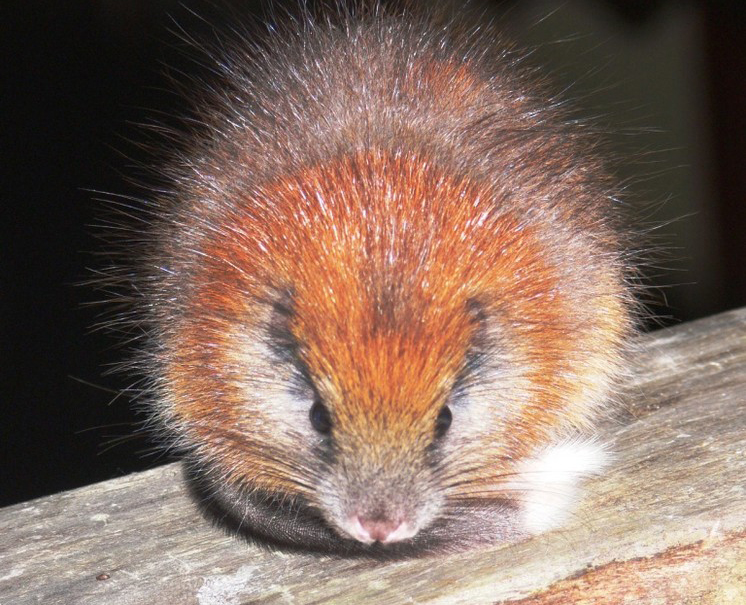Red-crested Tree Rat
Species Data
Class: Mammalia
Order: Rodentia
Family: Echimyidae
Scientific Name: Santamartamys rufodorsalis
IUCN Red List status: Critically Endangered
Description
The Red-crested Tree Rat was thought to be extinct as it had not been recorded since 1989. It was rediscovered on 4 May after 131 years in El Dorado Reserve in Colombia. The fur is woolly, soft and long and is mostly fiery red; the tail is fuzzy black and white. The ears are small and light brown with tufts of long hair on the inner ear, but lack hair on the outer surface. There is a tuft of long black hair between the eye and the ear. The whiskers are exceptionally long and can reach up to 5 in (13 cm). Young have grey fur, turning rufous with maturity.
Behaviour
Red-crested Tree Rats have large eyes, as is usual in nocturnal animals. Very little is known about its diet but it is assumed to feed on plants, particularly fruits, nuts and seeds in keeping with other members of the family Echimyidae. It is known to be an agile climber, even on a vertical wooden surface; no sounds have been recorded.


Habitat
It is endemic to Colombia, and has only been found in Sierra Nevada de Santa Marta at altitudes of 700 to 2,000 m (2,300 to 6,600 ft), specifically in the El Dorado Reserve in north-eastern Colombia. Due to the location’s isolation and specific geological and climatic conditions, this mountainous region has high levels of biodiversity but unfortunately it is now suffering from significant degradation.
Threats and Conservation
The El Dorado Nature Reserve is two hours away from the popular tourist city of Santa Marta with spectacular views of the towering glacier-covered peaks of Sierra Nevada and the contrasting sands of Caribbean beaches, consequently it is becoming a tourist and birder destination. The habitat is primary subtropical and montane forest of the Sierra Nevada and the reserve holds one of the highest concentrations of endemic and threatened amphibian species on Earth, with much of the flora and fauna being endemic. But major ecological disasters have impacted on the reserve. Fires and hurricanes have taken their toll and the uncontrolled spread of agriculture and human colonisation are threatening the habitat and its unique wildlife. The Red-crested Tree Rat is listed as Critically Endangered by IUCN, due to loss of habitat; additionally the large number of feral cats in the region are thought to further threaten them.
